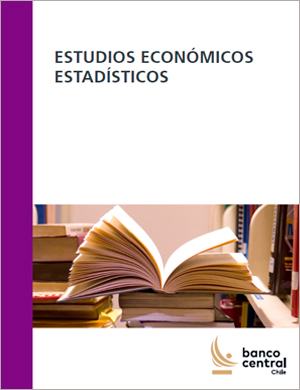Studies in Economic Statistics N° 137: Caracterización del Factoring Bancario en Chile: 2009-2020
Publications
Studies in Economic Statistics N° 137: Caracterización del Factoring Bancario en Chile: 2009-2020
Autor: Jorge Fernández B. , Francisco Vásquez L.
Description
In this article we present a characterization of bank factoring in Chile using microdata for the period2009-2020. We begin by describing the market, then we carry out three exercises that help us identify: i) the credit risk of firms in commercial loans given the frequency in the use of factoring; ii) commercial interconnections between selling and buying sectors; and iii) the evolution and intensity in the use of factoring and commercial debt during the life of the firms in the Commerce, Manufacturing and Construction sectors. In simple terms, a factoring operation occurs when a company sells its accounts receivable to a financial institution in exchange for immediate liquidity. In this type of operation, although the financial strength of the seller is important, the credit risk falls mainly on the credit strength of the buyer/debtor or third party, who is the final payer of the documents. One of our main findings is that, for a firm, ceasing to participate in factoring operations as a seller or as a buyer, it is an indication of a higher future credit risk in its commercial loans. We also observe that, in general, the main “third parties” in bank factoring operations correspond to either companies that report their financial statements to the Financial Market Commission or stated-owned companies. From the seller point of view, we observe that the Construction sector is intensive in use of factoring, compared to Commerce and Manufacturing. Finally, firms that chronologically access bank factoring as the first source of financing before commercial credits are usually more intensive in its use in later months. It is important to note that the conclusions presented in this document are limited to firms that access bank factoring and are not necessarily representative of non-bank factoring.
Studies in Economic Statistics N° 137: Caracterización del Factoring Bancario en Chile: 2009-2020
Boxes and graphics

